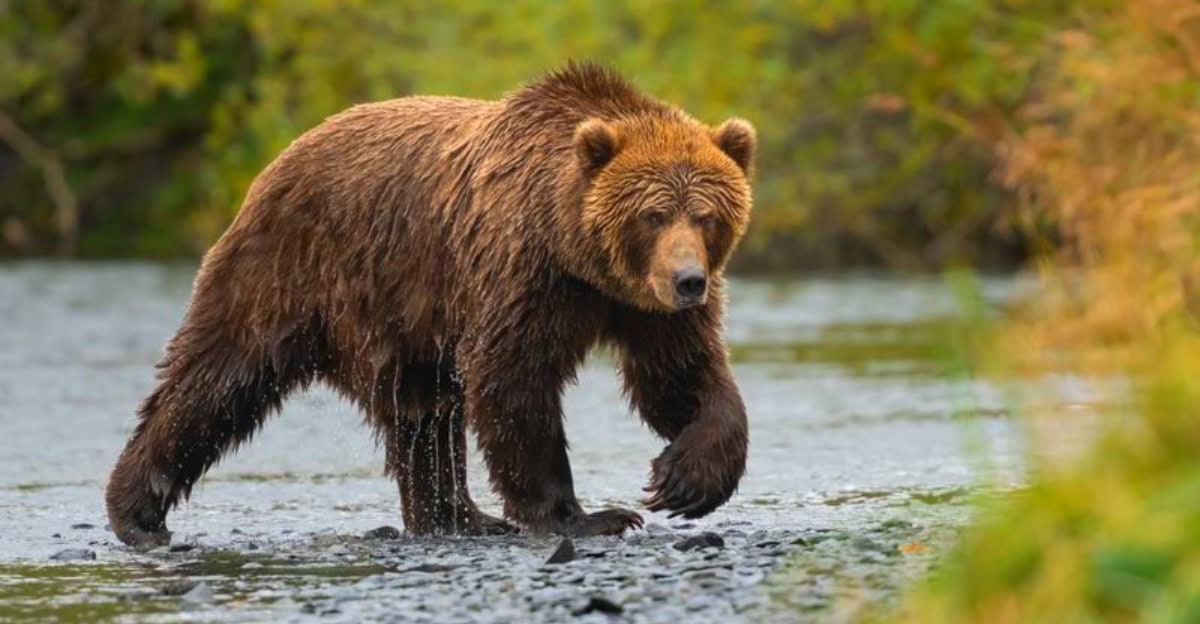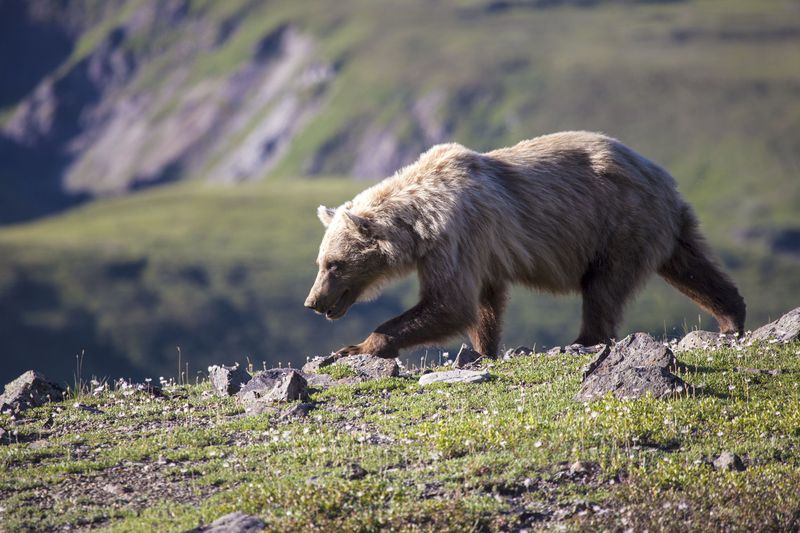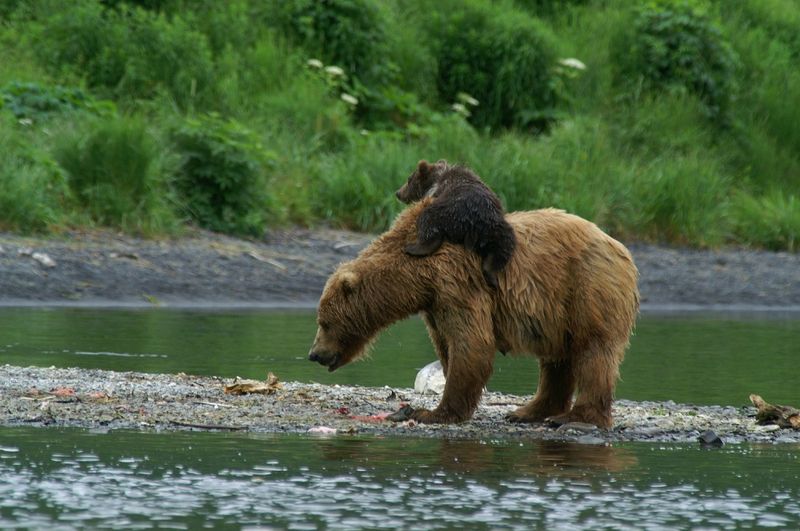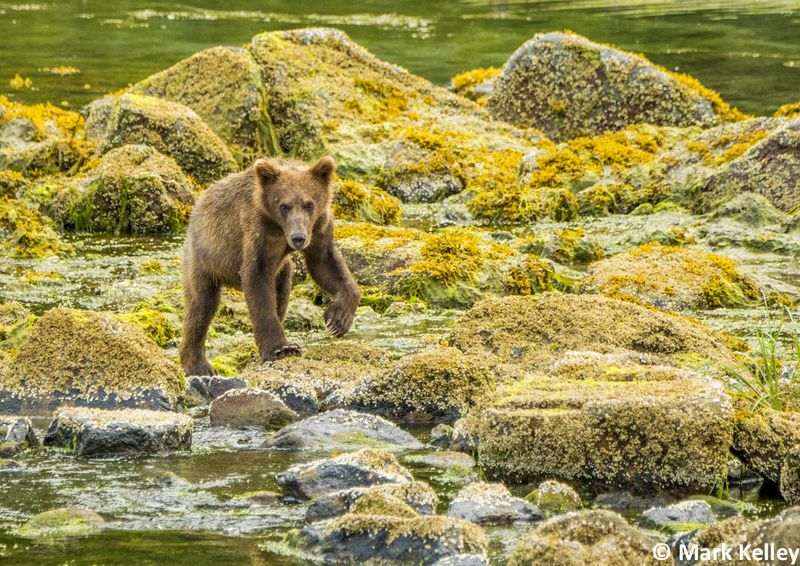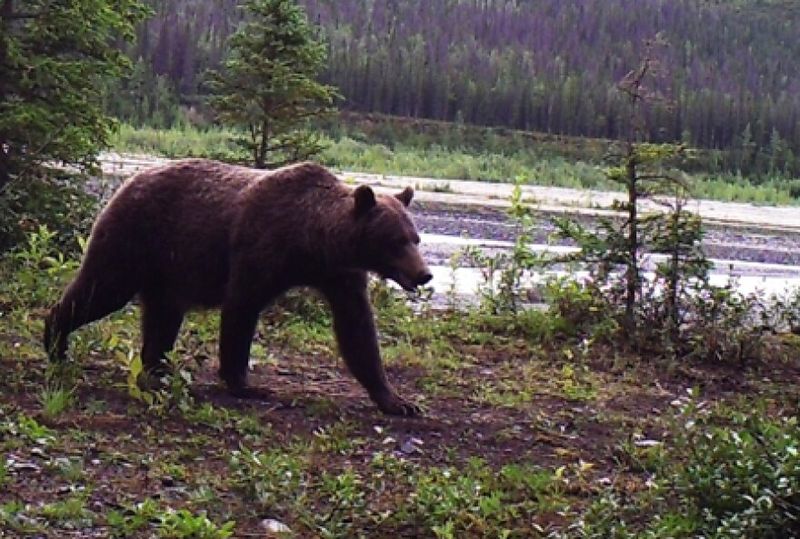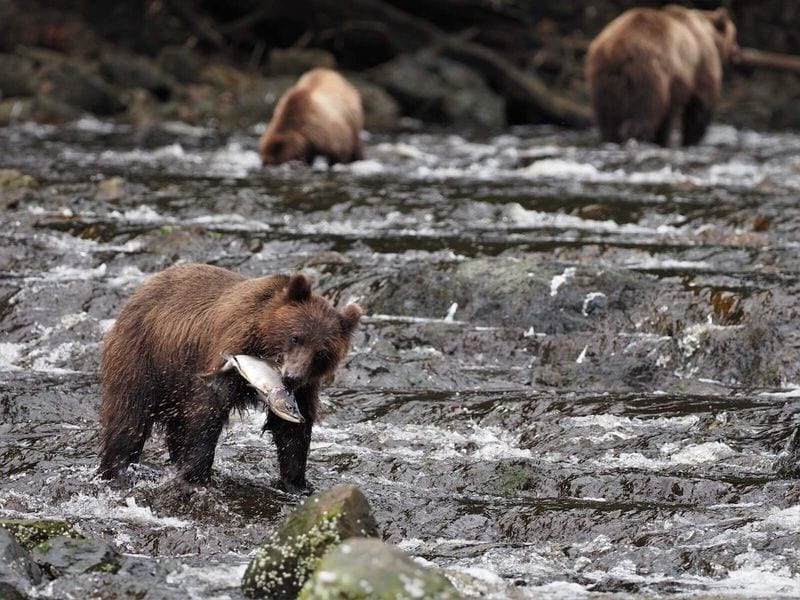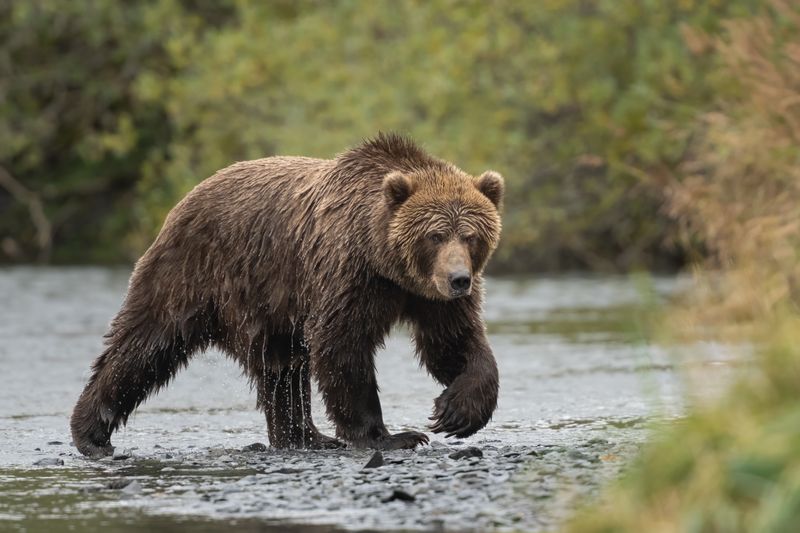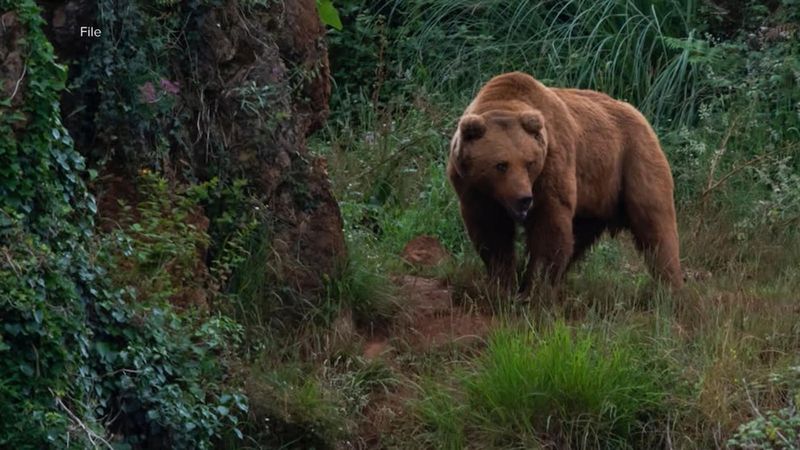Alaska, renowned for its breathtaking wilderness, is also home to a vast bear population, including grizzly, black, and polar bears. While awe-inspiring, these magnificent creatures pose a real threat, especially in certain hotspots where encounters are more frequent. This article uncovers ten of these perilous locations, each with its unique set of dangers and stories. From the remote islands to urban outskirts, these areas demand respect and caution from anyone who dares to tread. Whether you’re an adventurer, a nature lover, or simply curious, this guide will navigate you through Alaska’s bear attack hot spots and provide insights into how to stay safe while exploring these wild terrains.
1. Katmai National Park
Katmai National Park, a sanctuary for nature enthusiasts, is famous for its dense brown bear population. Imagine hundreds of bears fishing for salmon along Brooks River, creating a spectacle both thrilling and dangerous. Visitors gather on viewing platforms, yet stepping off-trail brings risk. Surprise bear encounters are common here. Rangers stress the importance of maintaining distance and carrying bear spray. Though bears in Katmai are generally less aggressive due to abundant food, the proximity and sheer number make it a notorious bear attack hotspot. The park’s wild beauty belies the unpredictable nature of its residents, reminding visitors to tread carefully.
2. Denali National Park
Denali National Park offers vast wilderness and stunning views, home to both grizzly and black bears. While bear attacks are rare compared to visitation, the park has seen severe maulings. Notably, a 2012 incident involved a solo backpacker’s fatal encounter with a grizzly. Remote trails and limited ranger presence heighten the potential danger. Bears here, less habituated to humans than in Katmai, may react aggressively to surprise. Campers must use bear-proof containers, but vigilance remains essential. In Denali, the magnificence of nature is matched by its raw, untamed spirit, where bears maintain their ancient dominion.
3. Chugach State Park
Chugach State Park, just outside Anchorage, is a sprawling wilderness where urban life meets bear country. Its accessibility makes it a favorite for hikers and runners, yet also a site for frequent bear attacks. Runners face surprise encounters on narrow trails. Recent maulings, including fatal incidents involving teenagers, highlight the danger. Both black and brown bears roam here, often near neighborhoods. Because human activity is constant, bears are unpredictable. Rangers advise hiking in groups, making noise, and avoiding dawn or dusk. Chugach is a reminder that even the outskirts of civilization can hold wild, unpredictable threats.
4. Kodiak Island
Kodiak Island, synonymous with bear country, is home to the legendary Kodiak brown bear, among the world’s largest land carnivores. With approximately 3,500 bears, encounters are inevitable. Most are non-violent, thanks to ample food sources. However, attacks occur when hikers surprise bears or encounter sows with cubs. Guided bear-viewing trips are common, yet the risk is respected by locals and guides alike. The size of Kodiak bears makes any attack potentially catastrophic. On this island, the simple rule prevails: bears have the right of way, and caution is paramount in their majestic, untamed domain.
5. Glacier Bay National Park
Glacier Bay National Park, renowned for its fjords and wildlife, hides a robust brown bear population. Kayakers and campers often find themselves near bears along beaches. Bears here are less accustomed to humans, making them unpredictable. Non-fatal attacks occur when camps are unknowingly set near feeding grounds. The Park Service enforces strict food storage rules and advises carrying bear spray. Glacier Bay’s breathtaking scenery is juxtaposed with the ever-present danger of its untamed residents. Solitude in this park doesn’t equate to safety, serving as a constant reminder of the wild nature of Alaska’s wilderness.
6. Wrangell–St. Elias National Park
Wrangell–St. Elias, America’s largest national park, spans 13.2 million acres of rugged wilderness, inhabited by grizzlies and black bears. The park’s size and remoteness increase the risk of unplanned bear encounters. Attacks are reported near low-visibility areas like river crossings. Sparse ranger patrols mean emergency responses can be delayed. Experienced travelers treat this expanse with caution: traveling in groups and maintaining noise. The unmatched wilderness rewards adventurers who respect that humans are mere guests in bear territory. The park’s vastness and raw beauty offer both awe and an ever-present reminder of nature’s unyielding power.
7. Admiralty Island
Admiralty Island, often called the “Fortress of the Bears,” has one of the highest densities of brown bears on Earth. This remote location in Southeast Alaska is sacred to the Tlingit people and vital to biologists. For visitors, the bear concentration guarantees encounters. While attacks are infrequent, they occur when hikers disturb bears at salmon streams. The island’s remoteness means help is far away. Strict safety practices are emphasized. Admiralty is a place where bears dominate, a stark reminder that some wilderness areas remain truly untamed. Respecting nature’s hierarchy is crucial in this dense bear habitat.
8. Lake Clark National Park
Lake Clark, attracting fewer visitors than Katmai, is rich in bears and known for guided viewing experiences. Bears gather on Cook Inlet’s tidal flats in large numbers during summer feeding. While guided tours minimize danger, solo adventurers face higher risks. Several close calls involve campers unwittingly setting tents on bear paths. The park enforces food storage rules and insists on constant vigilance. Lake Clark combines wilderness isolation with bear density, offering thrilling encounters but stark reminders of possible peril. Here, the magic of bears in their natural habitat is balanced with the need for caution and respect.
9. Kenai Peninsula
The Kenai Peninsula, known for its rich fishing and thick forests, is a magnet for both tourists and bears. Popular trails like Russian River Falls are infamous for sudden bear-human encounters as both compete for salmon. The proximity to Anchorage makes it accessible, yet deceptively wild. Bear attacks near campgrounds and riversides underscore the risks. Recent fatal and near-fatal incidents have heightened awareness. Authorities urge visitors to carry bear spray and avoid fishing alone. Though seemingly tranquil, the Kenai Peninsula is a realm where the wilderness still reigns supreme, with bears as its formidable inhabitants.
10. Anchorage Outskirts
Surprisingly, Anchorage, Alaska’s largest city, is a bear attack hotspot. The city lies in prime bear habitat, where black and brown bears wander into greenbelts and even neighborhoods. Attacks have occurred on trails like the Tony Knowles Coastal Trail. Incidents involving joggers and cyclists grab headlines. Urban bears, stressed by human activity, become unpredictable. Residents must secure trash, avoid outdoor pet food, and carry deterrents. Anchorage highlights that bear danger is not confined to the wild; it often encroaches upon urban life. Awareness and preparedness are essential, even within city limits, to coexist safely with these formidable animals.
